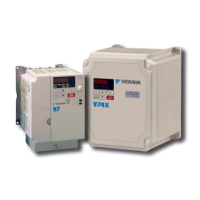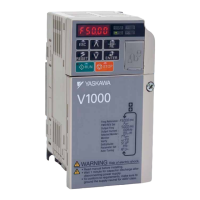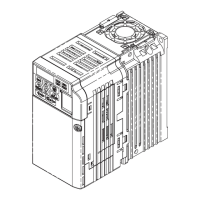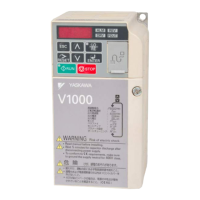u
Installation Environment
n
Enclosure Panels
Keep
the drive in a clean environment by
either selecting an area free of airborne dust, lint, and oil mist, or install the drive
in an enclosure panel. Be sure to leave the required space between drives to provide for cooling, and that proper measures
are taken so that the ambient temperature remains within allowable limits. Keep flammable materials away from the drive.
If the drive must be used in an area where it is subjected to oil mist and excessive vibration, protective designs are available.
Contact Yaskawa or your Yaskawa agent for details.
n
Installation Direction
The drive should be installed upright as specified in the manual.
u
Settings
n
Motor Code
If using OLV/PM designed for permanent magnet motors (A1-02 = 5), make sure that the proper motor code is set in
parameter E5-01 before performing a trial run.
n
Upper Limits
The drive is capable of running the motor up to 400 Hz. Due to the danger of accidentally operating the motor at high
speed, be sure to set the upper frequency limit. The default setting for the maximum output frequency is 60 Hz.
n
DC Injection Braking
Motor overheat can result if there is too much current used during DC Injection Braking, or if the DC Injection Braking
time is too long.
n
Acceleration/Deceleration Times
Acceleration
and deceleration times are affected by how
much torque the motor generates, the load torque, and the inertia
moment ((GD
2
)/4). Set a longer accel/decel time when Stall Prevention is enabled. The accel/decel times are lengthened
for as long as the Stall Prevention function is operating. For faster acceleration and deceleration, install a braking option
or increase the capacity of the drive.
u
Compliance with Harmonic Suppression Guidelines
The drive conforms to strict guidelines in Japan
covering harmonic suppression for power conversion devices. Defined in
JEM-TR201 and JEM-TR226 and published by the Japan Electrical Manufacturers’ Association, these guidelines define
the amount of harmonic current output acceptable for new installation. Instructions on calculation harmonic output are
available at www.e-mechatronics.com.
u
General Handling
NOTICE: Wiring Check. Never connect the power supply lines
to output terminals U/T1, V/T2, or W/T3. Doing so will destroy the drive.
Be sure to perform a final check of all control wiring and other connections before applying line power. Make sure there are no short
circuits on the control terminals (+V, AC, etc.), as this could damage the drive.
n
Selecting a Circuit Breaker or Leakage Circuit Breaker
Yaskawa recommends installing an Earth leakage Circuit Breaker (ELCB) to the power supply side to protect drive wiring
and prevent other damage in the event of component failure. A Molded Case Circuit Breaker (MCCB) may also be used
if permitted by the power system.
The ELCB should be designed for use with an AC drive (i.e., protected against harmonics). MCCB selection depends on
the power factor for the drive, determined by the power supply voltage, output frequency, and load. Refer to Installing
Peripheral Devices on page 308 for more information on breaker installation. Note that a larger capacity is needed when
using a fully electromagnetic MCCB, as operation characteristics vary with harmonic current.
n
Magnetic Contactor (MC) Installation
Use an MC to ensure that line power to the drive can be completely shut off when necessary. The MC should be wired so
that it opens when the drive fault output is triggered.
Avoid switching the MC on the power supply side more frequently than once every 30 minutes. Frequent switching can
cause damage to the drive.
i.3 Application Precautions
20
YASKAWA ELECTRIC SIEP C710606 16C YASKAWA AC Drive – V1000 Technical Manual
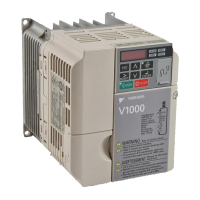
